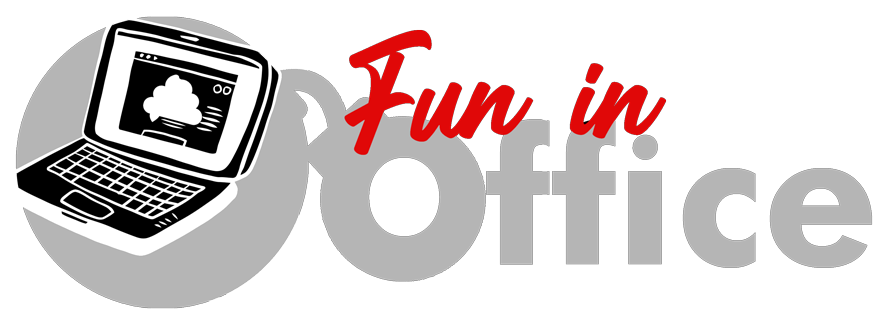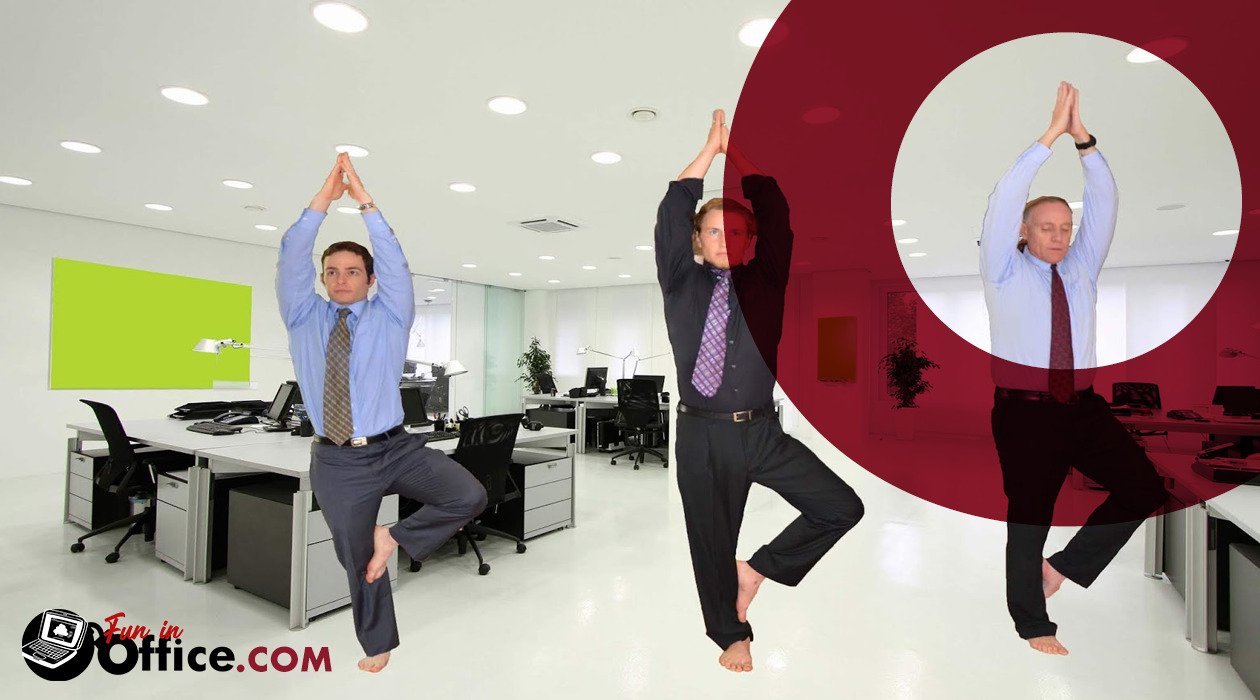Office-friendly yoga postures are a quick and easy approach to relieve the pressures of desk-bound employment. While sitting, the Cat-Cow stretch enhances spinal agility and reduces back strain. Sitting Forward Fold improves flexibility in the hamstrings and relaxes the mind, whilst Seated Spinal Twist relieves lower back pain. Neck Stretches relieve shoulder and neck stress, while Desk Plank engages the back muscles for stability. These postures, when included in your daily routine, may increase flow, decrease stress, and boost your general well-being, making them excellent tools for maintaining a healthy and effective job.

1. Chaturanga Stance At A Desk
The workstation chaturanga makes doing pushups very simple because the desk supports most of your weight. Place both hands on your work surface (shoulder width spread) and move your feet backward into a diagonal push-up stance to increase upper body strength. Breathe and push yourself in onto the work surface, pulling your elbows towards your ribs once you achieve the proper form. Exhale as you return your upper body to the beginning position. Perform this 10-15 times regardless of how many times you like during the day.
2. Pose Of A Seated Crescent Moon
The moon crescent is a terrific stretch for lengthening and releasing side and shoulder strain, therefore it’s an excellent position to do at work. Lift your arms over the top of your head and grip your hands together while sitting at an angle of 90 degrees with your feet solid on the ground. Breathe and turn your upper body and arms over to the side. Take a couple of seconds to enjoy the stretch before exhaling and returning to your starting posture. Rep on the opposite side. Repeat ten repetitions on each side and do this workstation exercise as frequently as is necessary to reduce tension.
3. Pose An Upward Dog At The Desk
Even though you’re not a frequent yoga practitioner, you’ve probably aware of the downward-facing dog stance – well, the upward dog pose is a variation of that. It’s an excellent technique to stretch the muscles in your shoulders and chest. Begin by leaning at an angle of 45 degrees, hands on your desk, arms stretched, and legs straight ahead, avoiding arching your back. Slide your head and shoulders up slowly, reaching and stretching your arms, back, and shoulders. Hold this stance for 5 to 10 breaths before returning to the beginning position. Continue as frequently as necessary.
4. Pose Of The Chair Pigeon
It tends to put greater strain on the opposite side of our bodies when we sit for lengthy periods, which is where the chair pigeon position is a terrific exercise to release the muscles in the hips and re-establish some balance. To correctly accomplish this posture, sit at an angle of 90 degrees with both feet comfortably on the floor, crossing the left leg across your right, and maintaining your foot completely extended. Pull the left side of your knee against you just enough to feel a stretch on the outside of your thigh. Wait for 10 seconds before repeating on the opposite side at least five times.
5. Figure Four Seated Posture
This position is particularly important for releasing stress around your hip joints, which happens to everyone who works at a desk. This position is like the last one in that it is sitting at an angle of 90 degrees putting one ankle crossed by the opposing knee. In contrast to the chair pigeon posture, however, you are going to put your hand on the lifted leg to drive it lower and expand your hip flexion muscles. Continue for 10 seconds before repeating on the other side. Practice this stance as often as necessary to avoid chronic hip damage.
6. Pose Of A Stork
Consider oneself an oak that has to lengthen its roots — or, in your instance, your limbs — when doing the stork stance. To do this posture, stand next to the chair having your feet solidly planted on the ground. Lift one of your knees and bring the other leg toward your body by gripping your leg (just beneath your knee) for 10-15 seconds. If you are unable to balance on your own, begin by hanging onto the chair using one of your hands. After some time, you should begin to develop stronger abdominal endurance, which will help you maintain a better sitting posture.
7. Desk eagle arms pose
This basic level yoga posture is ideal for anybody working a desk job who wants to improve their back, neck, and shoulder regions. Sit at a 90-degree position and lift both arms above your face, crossing your arms and interlocking your hands. Hold for between five and ten seconds before repeating the cycle with the crossed arm switched. This stretch may appear difficult at first, but after a few repetitions, it should be simpler to combine both palms and extend out the fingertips.
8. Pose With A Seated Twist
One may be familiar with the twisted posture because it is a typical exercise performed throughout any cool-down program. It’s designed to stretch your obliques, full back, and shoulders to relieve stress in your back. We’ve made this work-friendly, so you don’t wind up on the floor (and get strange stares in the workplace). Begin by reclining at an angle of 90 degrees and placing the left side of your body behind your left hip, followed by placing your opposite hand, palm facing up, on the left side of your hip, and twisting to the left. Continue for 10 seconds before repeating on the opposite side until you’re feeling re-energized.
9. Sit And Stand Pose
Consider the sit and stand stance a milder version of the squat – a workout required to strengthen your quadriceps and upper leg muscles. Begin with this workout by standing in front of the chair (as if going to sit in it). Take a deep inhale and lift your arms upward as you drop yourself into your chair; exhale and practice 15—20 times. Repeat this activity as often as you can during the day to raise the rate of your heart and so eliminate fat.
10. Pose Of A Standing Seal
Standing seal position is a terrific way to finish every day’s workout since it stretches your spine and legs, and opens your shoulders. Begin with your legs spaced hip-width apart, intertwine your fingers beneath your back, and begin to relax into a forward-facing fold posture. When you approach up to where you started, take a few long breaths in and out. Repeat many repetitions once you feel completely stretched and relaxed.
Conclusion, including these office-friendly yoga positions in your routine, every day will improve your bodily comfort, mental focus, and productivity at work. Stretching and relaxing for a few minutes can help relieve the stresses of extended sitting, improve balance, and improve attention. These practices, whether gentle twists, calming stretches, or core-engaging postures, provide a practical and accessible approach to maintaining your well-being amid the rigors of office life. By adopting these postures, you are investing in a better and more harmonious career, which will eventually benefit your overtime well-being and efficiency.
Last modified: August 28, 2023




















